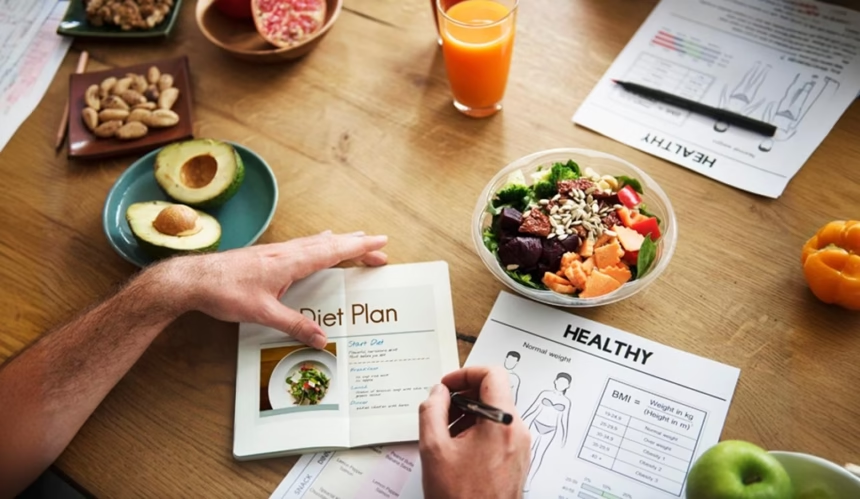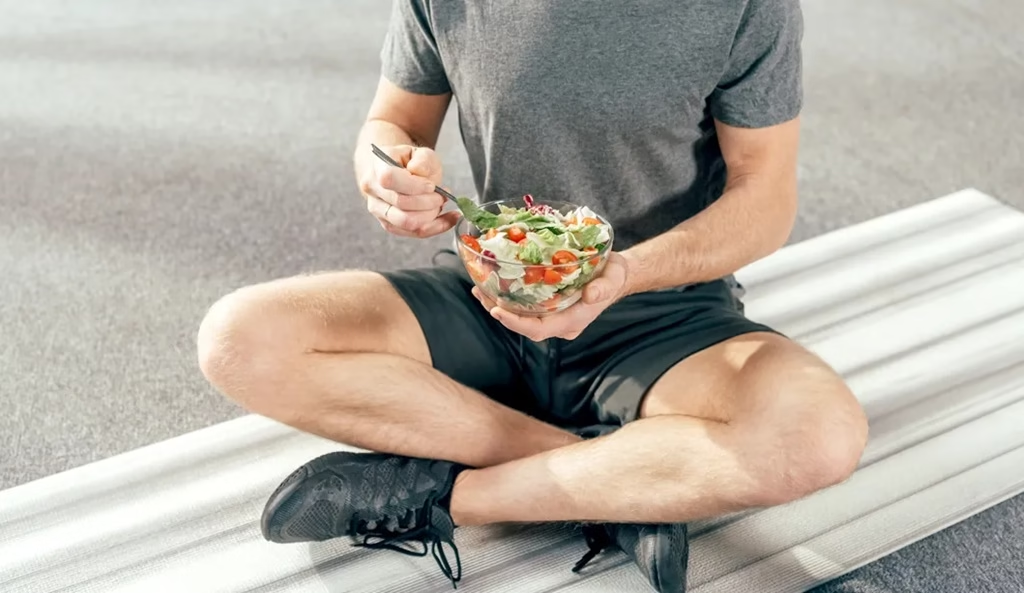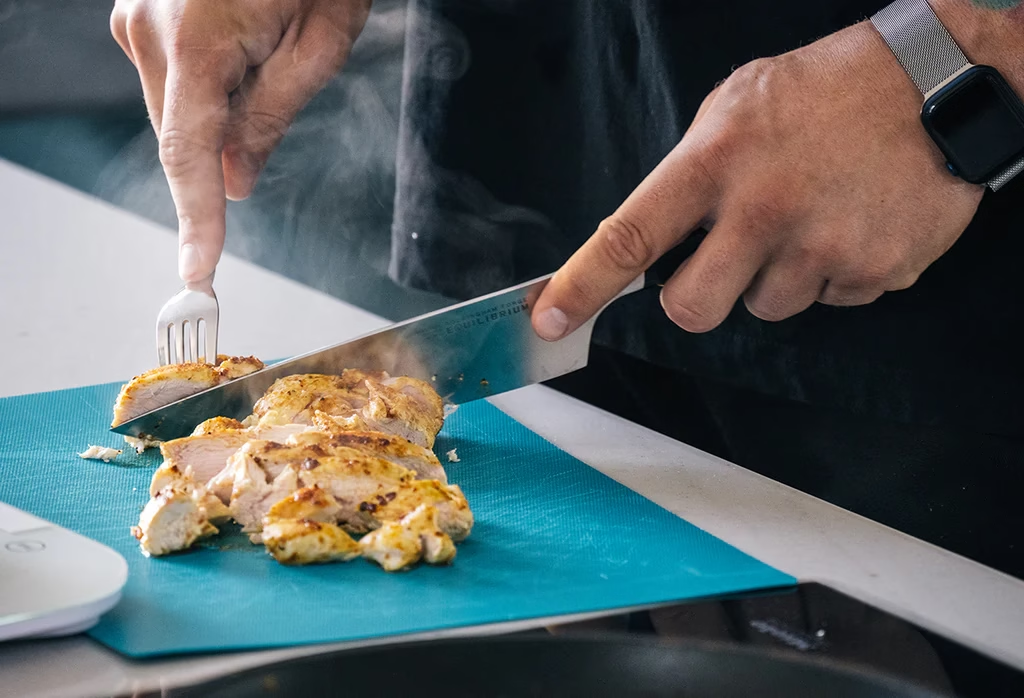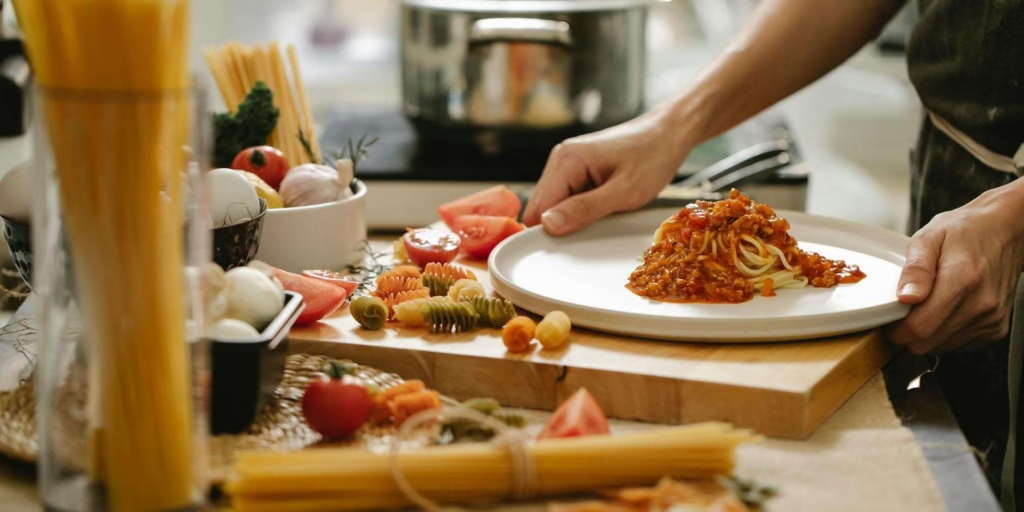Body recomposition sounds complex, but it means one clear thing: fat goes down while muscle stays or rises. A minimalist diet trims the clutter. Fewer choices, repeatable meals, and a short shopping list keep life simple, save time, and improve consistency.
What works in 2025 remains steady. Eat lean protein at each meal, at least 20 grams. Sit in a small calorie deficit. Choose whole foods most of the time. Lift weights, sleep well, and manage stress. This guide offers clear steps, a tiny shopping list, quick meal ideas, and the easiest way to track progress without spreadsheets or apps. It keeps jargon out and progress in.
What is a minimalist diet for body recomposition?
Body recomposition means losing fat while building or keeping muscle. It is not the same as simple weight loss. Weight loss chases a lower number on the scale. Recomposition targets shape, strength, and health. The body may weigh the same, yet jeans fit better and lifts feel stronger.
A minimalist diet is about fewer decisions and more structure. It uses repeatable meals, short routines, and a handful of staple foods. The core idea stays tight: eat mostly whole foods, hit daily protein, keep a slight calorie deficit, and pair it with strength training. This suits busy people who want results without complex plans or endless tracking.
For an overview of evidence-aligned foods and meal ideas, see this practical summary on a body recomposition diet with guidelines and a meal plan.
Those with medical conditions, pregnant women, or teens should seek advice before making big changes to their diet or training.
Recomposition vs weight loss: why the goal matters
The scale may move more slowly during recomposition. That is fine. Clothes fit better, muscles look fuller, and strength increases. Fat drops while muscle holds firm, so shape improves. It rewards patience.
Photos, tape measures, and training logs tell the truth better than daily weigh-ins. A weekly average weight helps, but do not let one morning’s number set the mood.
Why simple beats complex for busy lives
Fewer recipes and repeatable meals are a secret weapon. Fewer choices mean less decision fatigue. It cuts food waste, saves money, and keeps the fridge under control. Batch cooking once per week, short shopping lists, and quick spices make eating well easy.
Simplicity supports adherence. Adherence brings steady results. That is the aim.
Who this approach suits, and when to be cautious
This works well for beginners to intermediates, people short on time, and those who dislike heavy tracking. It is also helpful for anyone who wants a plan that survives late meetings and travel.
Caution is wise for those with a history of eating disorders, pregnancy, or medical conditions. Speak to a clinician or dietitian first.
The simple rules that work in 2025
- Prioritize protein, 20 to 40 grams per meal, spread across the day.
- Sit in a small calorie deficit, not a crash diet.
- Choose smart carbs that fuel training and recovery.
- Include healthy fats and at least 25 grams of fibre per day.
- Hydrate, and sleep 7 to 9 hours if possible.
- Lift 2 to 4 times per week, train all major muscles.
- Walk most days to support energy balance.
If a macro framework helps, a high-protein split can work well. Here is a simple take on recomposition macros and training structure from an 8-week guide on losing fat and gaining muscle.
Protein made simple: anchor every meal
Target 20 to 40 grams of protein per meal. Spread protein across 3 to 4 meals to protect muscle while in a deficit. Protein helps with fullness, too, which makes a deficit easier to hold.
Easy options include chicken breast, turkey, lean beef, eggs, Greek yogurt, cottage cheese, tinned tuna, lentils, chickpeas, tofu, and tempeh.
Quick rule of thumb: a palm to two palms of lean protein per meal for most adults. Larger bodies may need more.
Calorie control without counting
A slight deficit drives fat loss without risking muscle. Start by trimming 250 to 400 kcal per day. That could mean removing one snack or reducing oils and carbs a little. Hold that change for 2 to 3 weeks, then review.
Use a plate guide instead of numbers. Add a steps target, aim for 7,000 to 10,000 per day to support the deficit and recovery.
Carbs to fuel lifting, not cravings.
Smart, high fibre carbs keep hunger low and training strong. Oats, brown rice, quinoa, wholegrain wraps, sweet potatoes, fruit, and plenty of veg all fit. Time for more carbs around workouts for energy and recovery. Keep some carbs at other meals if it helps mood and sleep.
Healthy fats and fibre for hormones and hunger
Choose simple fat sources, olive oil, avocado, almonds, walnuts, and mixed seeds. Use small servings to control calories, since fats are dense. Aim for at least 25 grams of fibre each day from veg, fruit, legumes, and whole grains. Fibre supports fullness and digestion.
Training, sleep, and stress make the diet work.
Lift 2 to 4 times per week. Train legs, push, pull, and core across the week. Stick to big moves, squats or leg presses, hip hinges, presses, rows, and carries. Sleep 7 to 9 hours. Manage stress with short walks, breath work, and time outdoors.
Recovery supports muscle growth, appetite control, and consistent fat loss. For a simple strength plan to pair with this diet, try this beginner’s 8-week body recomposition workout guide.

Build fast meals with a tiny shopping list.
Food should be quick, tasty, and repeatable. Think mix and match, not MasterChef. Pick a protein, pile on colours, add a smart carb, and finish with a small serving of healthy fat. Keep a few sauces and spice blends to change the feel.
The 1-2-3 plate method
Use this formula for each meal:
- 1 protein anchor
- 2 fists of colourful veg or fruit
- 1 cupped hand of smart carbs
- 1 thumb of healthy fat
Examples for each part:
- Protein: chicken breast, eggs, tofu, Greek yogurt, tinned tuna
- Veg or fruit: leafy greens, broccoli, tomatoes, peppers, berries, apples
- Smart carbs: oats, brown rice, quinoa, wholegrain wrap, sweet potato
- Healthy fats: olive oil, avocado, almonds, walnuts, seeds
On training days, add a little extra carb around the workout.
A 14-item minimalist shopping list
These staples cover a week with ease:
- Chicken breast
- Eggs
- Greek yoghurt
- Cottage cheese
- Tinned tuna
- Lentils
- Chickpeas
- Tofu
- Oats
- Brown rice
- Quinoa
- Sweet potatoes
- Leafy greens and broccoli
- Berries and apples
- Olive oil
- Nuts
Budget tips: buy frozen veg and fruit, use tinned beans, and watch supermarket own brands. For more prep ideas, browse these simple meal prep recipes for muscle building and fat loss.
15-minute meals and high-protein snacks
Rotate these fast options:
- Chicken, microwave rice, and frozen veg stir-fry, finished with soy and chilli.
- Tofu and veg sheet pan bake, olive oil, paprika, and garlic, served with quinoa.
- Tuna and bean salad with olive oil, lemon, tomatoes, onion, and herbs.
- Greek yogurt, berries, oats, and a sprinkle of seeds.
- Cottage cheese on wholegrain toast with cucumber and cracked pepper.
- Egg and veg omelette, plus a side of fruit.
- Lentil and veg curry with microwave brown rice.
- Turkey or chickpea wrap, lettuce, tomato, yogurt sauce.
For more structured ideas, see this dietitian-led 7-day meal plan to gain more muscle. For dinner inspiration with strong protein hits, try these lean, high-protein dinner recipes.
Batch cook once, eat all week
B.atch cooking turns good intentions into easy wins. Cook large portions of a protein and a carb base on one day, then mix and match all week.
Simple plan:
- Cook 1.5 to 2 kg of chicken breast or tofu.
- Make a pot of brown rice or quinoa.
- Roast a large tray of mixed veg, carrots, peppers, onions, and broccoli.
Store in clear tubs and label them. Reheat safely. Change flavours with spice blends, curry powder, fajita mix, Italian herbs, or a spoon of pesto.
Track progress and adjust without stress.
Tracking should be light and steady. The goal is clarity, not pressure. Focus on changes in shape, strength, and energy, not just the scale.
Set a simple starting target.s
- Protein at every meal.
- A small calorie trim, about 250 to 400 kcal.
- 7,000 to 10,000 steps per day.
- 2 to 4 strength sessions per week.
- Daily water target, 2 to 3 litres, adjust for size and activity.
Weekly check-in that takes 10 minutes
Use this short checklist:
- Bodyweight average across 3 to 4 mornings.
- Waist and hip measurements.
- Front and side photos in the same light.
- Gym lifts or reps written down.
- Energy and sleep quality.
Watch trends over 2 to 3 weeks. Do not chase day-to-day noise.
How to adjust when progress stalls
Change one lever at a time. Then wait 10 to 14 days.
- Add 10 to 20 grams of protein per day.
- Trim 150 to 200 kcal from carbs or fats.
- Add 1,000 daily steps.
- Improve sleep, target an extra 30 to 60 minutes.
If training lacks structure, adopt a simple full-body split. A focused plan helps muscle gain while fat drops, as covered in this straightforward body recomposition plan.
Common mistakes to avoid
- Cutting calories is too hard.
- Skipping protein at meals.
- Relying on ultra-processed snacks.
- Doing lots of cardio with no lifting.
- Poor sleep most nights.
- Changing plans too often.
Keep meals simple. Repeat the winners. Be boring on purpose, and results stop being boring.
Handy portion guide
Use this quick table to build plates without counting. Adjust up or down for body size and hunger.
| Component | Portion guide per meal | Notes |
|---|---|---|
| Protein | 1 to 2 palms | 20 to 40 g protein, lean options preferred |
| Veg or fruit | 2 fists | Mix colours, include leafy greens |
| Smart carbs | 1 cupped hand, 2 if training hard | Oats, rice, quinoa, wraps, sweet potatoes |
| Healthy fats | 1 thumb | Olive oil, avocado, nuts, seeds |
| Water | Drink with meals and between meals | Aim for 2 to 3 litres per day |
A week that works, in three moves
- Plan 6 to 8 go-to meals. Keep them on rotation.
- Shop the 14-item list. Batch cook the big rocks.
- Train 2 to 4 times, sleep on time, and walk daily.
If a visual plan helps, combine this article with the practical overview in the body recomposition diet guidelines and meal plan. It pairs well with the training ideas linked above.
Conclusion
Body recomposition thrives on consistency, not complexity. A minimalist diet with enough protein, whole foods, and a small calorie deficit, paired with steady strength training, drives visible change. Start with one action this week, add protein to breakfast or batch cook on Sunday. Pick two quick meals and a tiny shopping list, then review progress in two weeks. Keep it calm, keep it simple, and let the results build.


















